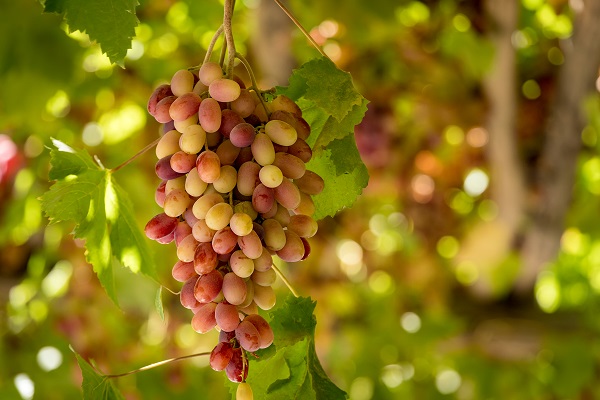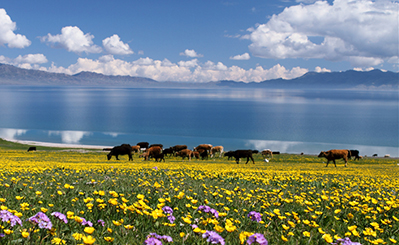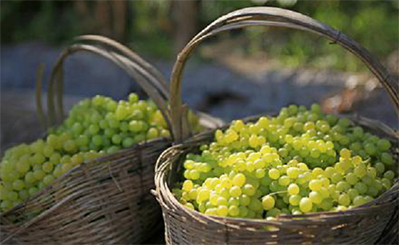Xinjiang wine tours offer respite from summer heat

Grapes in Turpan, Xinjiang Uygur autonomous region [Photo/IC]
Wine cellars are becoming popular tourist destinations in the Xinjiang Uygur autonomous region, especially in the baking summer, as local authorities have added them to recommended travel routes, China Tourism News reported.
"While temperatures outside have risen to more than 40 C, it remains just around 18 C inside the wine cellar," Zhuang Aiping, a tourist from Central China's Hunan province, told the Beijing-based newspaper. Zhuang was on a visit to a winery called Linghaiba in Toksun county, Xinjiang. "The stark contrast between the extreme temperatures creates a sense of wonder on the journey in Xinjiang," Zhuang added.
Since June, Linghaiba winery has received more than 500 tourists, representing a more than twofold increase month-on-month, said Liao Hua, general manager of the winery. "They come to taste wines and learn about wine culture, and some of them bought a variety of wines, like dry red wine and brandy, from our winery," Liao said.
CITIC Guoan Wine, situated in Manas county, Xinjiang, launched a program designed to appeal mainly to families.
Yan Jiayan, a primary school student in the county, visited the wine company with her parents, hoping to learn about wine production in her hometown.
"After the trip, I could feel a strong wine culture in my hometown," Yan said. "Xinjiang, as a key hub of fruit production, has established a reputation for its vineyards. I'll tell my friends from outside Xinjiang that my hometown is abound with wine and it is a crucial wine production site."
As the annual school summer break has begun, a growing number of tourists have visited Guoan Wine. Some of them hail from other regions of Xinjiang — including Urumqi, Shihezi and Kuitun cities — and others come from outside Xinjiang, according to a staff member of the company.
The autonomous region has four major wine production areas: the north of Tianshan Mountains, Ili Valley, Yanqi Basin and the Turpan-Hami Basin, said Zhou Hao, an official with the Xinjiang Department of Culture and Tourism.
"We are exploring a new development model integrating wine, sightseeing and healthcare travel, and developing tours to characteristic wineries, which will lay a solid foundation for enriching the local tourism industry and extending the wine industrial chain," Zhou said.
The major wine production areas have tapped local tourism resources including scenic sites, forest parks and agricultural parks to craft a string of wine-related tourism products. These include winery-themed tours, festivals and trips to wine museums. They have also founded wine tourism trade associations to expand the influence of local brands and bolster the growth of Xinjiang winery tours.
Xinjiang is in a prime location for grape plantations. With ancient origins of grape-planting and winemaking, it remains a major wine production hub in the country. The autonomous region's government has rolled out a series of policies to boost the integration of tourism and wine industries.
To date, 13 wineries across Xinjiang have been recognized as A-level scenic sites. During the 14th Five-Year Plan period (2021-25), the autonomous region plans to foster some 150 characteristic wineries, combining grape plantation, winemaking, tourism and cultural promotion, according to the report of China Tourism News.
 Attractions
Attractions Dining
Dining Culture
Culture